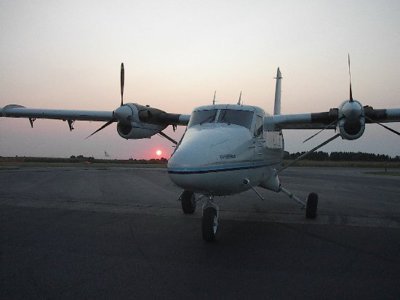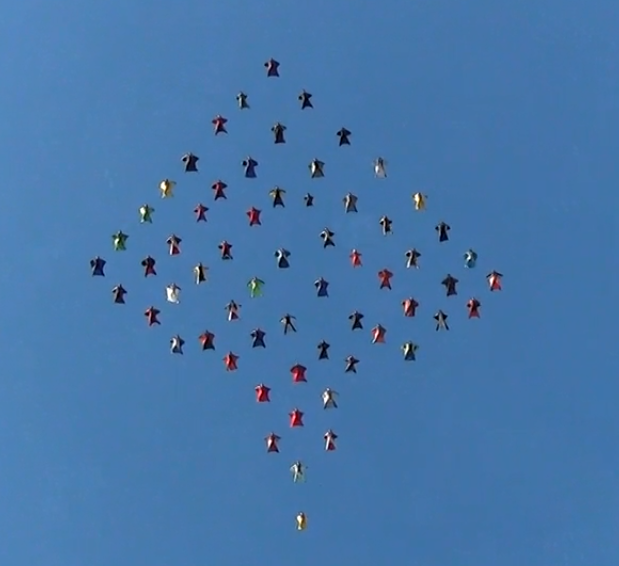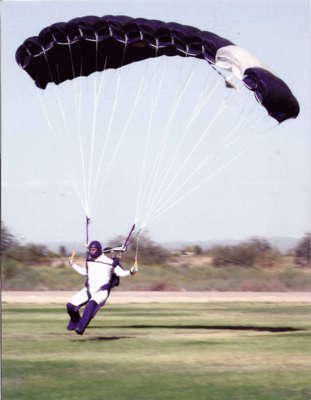Recommended Posts
QuoteIf you need to land in a farmers corp you also need to remember to land with the rows as well
Well we will just have to hope that the winds are blowing in the same direction that the crop rows are planted otherwise what good does it do to look for signs of wind direction? (eye roll smiley)
That bit of advice might be suitable for low/varibale wind days but the last thing one should be worrying about when landing off in a farmers field is if they're landing with the rows.
Some people dream about flying, I live my dream
SKYMONKEY PUBLISHING
winsor 187
QuoteQuoteOne of the things I do before getting on the plane is judge the wind direction by the sun (mind you if it was hazy, you may not have been able to do so) and remember 'land with the sun around 2 o'clock' or whatever. That way if I land off I have an idea of the wind direction.
This has to rank up there with the all time worst advice. Could you please elaborate with how the suns position dictates which way the wind is blowing? Does the suns position change if the wind changes while you climb to altitude? Using the sun as a reference point to determine wind direction is as good as flipping a coin, especially on days where the wind is constantly changing direction. You need to re think your method of determining wind direction before you hurt yourself.
Back before the EPA was a reality, you could count on the plume from at least one chimney or smokestack being visible near a built-up area, which made real-time wind determination easy. For better or worse, those days are long gone.
Using the sun as a directional reference provides a starting point, and it is of course not directly related to wind direction. It simply increases the odds that you are landing into the wind, which is a good thing.
Pointing into the direction from which the wind was coming 10 minutes ago (if you're jumping Mullins' plane - there may be some that aren't as fast...) seems like a better idea than simply picking a direction and hoping that it's a good one.
The contention that it is bad advice does not seem to be accompanied by a more effective field-expedient technique. If you know of a better way, please share it with us.
Blue skies,
Winsor
winsor 187
QuoteQuoteIf you need to land in a farmers corp you also need to remember to land with the rows as well
Well we will just have to hope that the winds are blowing in the same direction that the crop rows are planted otherwise what good does it do to look for signs of wind direction? (eye roll smiley)
That bit of advice might be suitable for low/varibale wind days but the last thing one should be worrying about when landing off in a farmers field is if they're landing with the rows.
Oh, I have to disagree with that.
Needless to say, I've made rather a few landings into a variety of crops, under canopies from rounds to Class V and with crosswinds ranging from nil to substantial.
There is a real laundry list of reasons why it is strongly advisable to land with the rows with a crosswind component instead of landing across the rows directly into the wind.
If you can sink it straight down between the rows, fine. Otherwise, keep your ground track between the rows until your arrival.
Blue skies,
Winsor
QuoteThe contention that it is bad advice does not seem to be accompanied by a more effective field-expedient technique. If you know of a better way, please share it with us
I did give the best way to verify winds. It's called a Penetration check. It's not a SWAG either, if you do it correctly, you know which way the wind is blowing. See my post above if explanation is needed.
As for landing with the rows. I have to say I have probablly landed in far worse places than anyone on this site, on purpose, unless your a smoke jumper or rough terrain jumper in the Military . I have A LOT of experience in landing in farmers fields, trees , triple canopy jungle and in Mountainous terrain and in the Ocean both day and night under rounds and squares . Many of them in 3rd world countries famous for slash and burn agriculture . The biggest issue for sport skydivers landing off is obstacles on the ground, many of which can only be seen at the "oh shit" altitude. Hence it's a good idea to try and land into the wind as much as possible while avoiding those obstacles and decrease any forward momentum. You can crosswind and downwind as well but personally, I want to be going as slow as possible when I have to land in a field that has been slashed and burned and has remnants of trees and other pointy objects protruding from the ground. If I have to hit it, I want to be going as slow as possible, that isn't always possible with cross or down wind landings. I stand by what I have posted on the rows, I speak from my and my fellow team mates experience.
Some people dream about flying, I live my dream
SKYMONKEY PUBLISHING
QuoteQuoteIf you need to land in a farmers corp you also need to remember to land with the rows as well
Well we will just have to hope that the winds are blowing in the same direction that the crop rows are planted otherwise what good does it do to look for signs of wind direction? (eye roll smiley)
That bit of advice might be suitable for low/varibale wind days but the last thing one should be worrying about when landing off in a farmers field is if they're landing with the rows.
Ummm.....ever tried not going with the rows of corn? Those corn cobbs are like clubs and the fewer clubs you can hit the better.
edit to add: OH, I see that you have. And a few more exotic things to boot!
www.diverdriver.com
ATP/D-19012
FB #4125
Some people dream about flying, I live my dream
SKYMONKEY PUBLISHING
QuoteLike I said, unless your skinny enough to actuall FIT between the rows of corn or other type of agriculture, your going to hit them eitherway. So you can opt for facing into the wind and striking a few corn cobbs at a low speed and bending the stalks over or worry about landing with the rows and potentially downwind and having a corn cobb shoved up your ass at a faster pace. But hey..you landed with the rows right?
I did. How'd you know?
www.diverdriver.com
ATP/D-19012
FB #4125
dragon2 0
Quote
Well personally I like to land near a road if I can. If I don´t, I´m in for a long walk through fields and farms, and the DZ van might not see me.
The problem with landing near roads is the power lines. They are nearly impossible to see until the last minute. A long walk beats an ambulance ride any day.
Oh right. Didn´t think about that: we don´t have all that many above-ground powerlines here. Usually not a problem.
Except for the few times you DO encounter them: yesterday I say half a 4way team land in a corn field because they had spotted the powerlines (at a DZ they probably only jump at for the nationals) too late. They were ok tho it took them some time to get out of the corn.
But on the whole, not many powerlines here, tough luck for BASE
ciel bleu,
Saskia
kallend 1,639
Quote
Well personally I like to land near a road if I can. If I don´t, I´m in for a long walk through fields and farms, and the DZ van might not see me.
The problem with landing near roads is the power lines. They are nearly impossible to see until the last minute.
This depends on your eyesight. If you can't see powerlines until you are too close to take avoiding action, you may need glasses.
The only sure way to survive a canopy collision is not to have one.
Remster 24
QuoteThis depends on your eyesight. If you can't see powerlines until you are too close to take avoiding action, you may need glasses.
Pssst: one may want to look for the pylones/posts too.. they are USUALLY thicker then the lines and USUALLY indicate where the lines are.
kallend 1,639
QuoteQuoteLike I said, unless your skinny enough to actuall FIT between the rows of corn or other type of agriculture, your going to hit them eitherway. So you can opt for facing into the wind and striking a few corn cobbs at a low speed and bending the stalks over or worry about landing with the rows and potentially downwind and having a corn cobb shoved up your ass at a faster pace. But hey..you landed with the rows right?
I did. How'd you know?
Having just walked in a corn field looking for a friend's cutaway main, I'd say don't land in a corn field in August if you can avoid it. In Illinois the corn is about 10' high right now, and the rows are about 16" apart. Just walking through the corn in any direction hurts. If you land with the rows and are just 8" off the line you will maximize the number of impacts with corn stalks! The cornfields are also full of nasty looking spiders and other critters.
The other thing to remember is the way out, it's very easy to get lost in there.
The only sure way to survive a canopy collision is not to have one.
I disagree. We are talking about a situation where a person is landing off the dz. Unless the spotting at your dz is unusually bad, it is probably rare to land in that location. It is easy to get distracted by other obstacles in an off dz landing and not see the lines until too late. Experience also plays a factor. I always teach a beginning jumper to land in the middle of a big field.
never pull low......unless you are
kallend 1,639
QuoteQuoteThis depends on your eyesight. If you can't see powerlines until you are too close to take avoiding action, you may need glasses.
Pssst: one may want to look for the pylones/posts too.. they are USUALLY thicker then the lines and USUALLY indicate where the lines are.
Yes- there are lots of clues, such as cut away vegetation along the easement, etc. I have good eyesight and I can generally spot a low voltage line from at least 1500ft, and the high voltage (power grid) lines from well over 5,000ft.
The only sure way to survive a canopy collision is not to have one.
kallend 1,639
Quote
This depends on your eyesight. If you can't see powerlines until you are too close to take avoiding action, you may need glasses.
I disagree. We are talking about a situation where a person is landing off the dz. Unless the spotting at your dz is unusually bad, it is probably rare to land in that location. It is easy to get distracted by other obstacles in an off dz landing and not see the lines until too late. Experience also plays a factor. I always teach a beginning jumper to land in the middle of a big field.
I'm not going to disagree with your recommendation.
My flying instructor many years ago told me how to look for power lines, and now I do this almost automatically whenever I'm flying or jumping in a new location.
I still maintain that if you have good eyesight and you actively look for powerlines, you can see them in plenty of time to set up a landing where they are not a factor. The problem arises if you fixate on where you want to land and don't scan the surroundings for things like powerlines etc.
The only sure way to survive a canopy collision is not to have one.
QuoteQuote
This depends on your eyesight. If you can't see powerlines until you are too close to take avoiding action, you may need glasses.
I disagree. We are talking about a situation where a person is landing off the dz. Unless the spotting at your dz is unusually bad, it is probably rare to land in that location. It is easy to get distracted by other obstacles in an off dz landing and not see the lines until too late. Experience also plays a factor. I always teach a beginning jumper to land in the middle of a big field.
I'm not going to disagree with your recommendation.
My flying instructor many years ago told me how to look for power lines, and now I do this almost automatically whenever I'm flying or jumping in a new location.
I still maintain that if you have good eyesight and you actively look for powerlines, you can see them in plenty of time to set up a landing where they are not a factor. The problem arises if you fixate on where you want to land and don't scan the surroundings for things like powerlines etc.
I'm not totally disagreeing with your logic. As an experienced jumper I might pick a spot that I would not recommend to a student. I have seen jumpers hit things (sometimes each other) while under canopy at the dz, let alone off the dz. I don't think that anyone would question Roger Nelsons experience' but he collided with another jumper which should have been easier to see than a power line.
never pull low......unless you are







--TB
Welcome my friends to the show that never ends.
Share this post
Link to post
Share on other sites